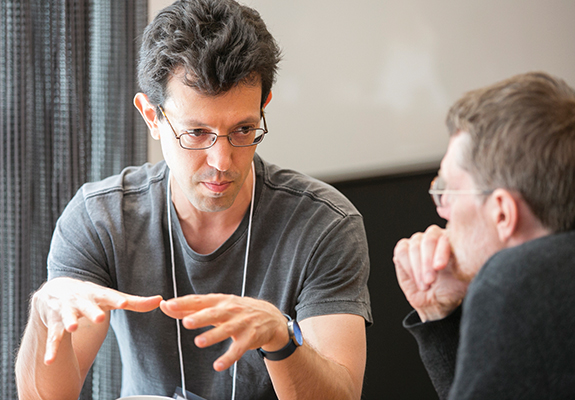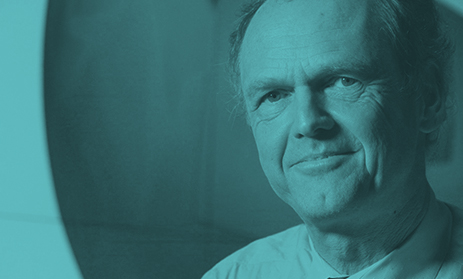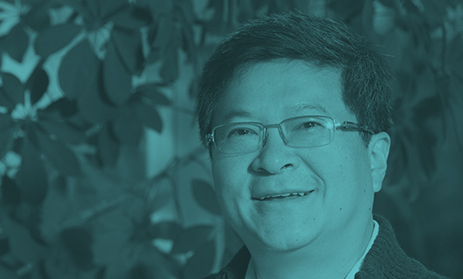
"Many things happen just because there's electricity in the air."
— Assaf Naor
The Simons Foundation currently supports four collaborations in mathematics and physical sciences. These projects bring groups of researchers together to
tackle problems that have promising paths to near-term progress and whose solutions would represent important research milestones in the field. The
Homological Mirror Symmetry collaboration and the Quantum Fields, Gravity and Information collaboration launched in 2015. The Many Electron Problem
collaboration and the collaboration on Algorithms and Geometry
began the year before.
In December 2014, Ran Raz presented a question in linear programming to his colleagues in the Simons Collabo-ration on Algorithms and Geometry. Linear programming centers on questions of optimization: Given a space of possible outcomes, how can you determine which point in that space maximizes or minimizes an associated linear function — a profit or a loss, for example? Raz, a computer scientist at the Weizmann Institute in Israel who is currently working at the Institute for Advanced Study in Princeton, New Jersey, was hoping to determine whether linear programming is easier if the space of possibilities is fixed while the function to be optimized is changed. While Raz was presenting, Oded Regev, a computer scientist at New York University, realized these questions might be related to his own research. "I saw him immediately have an idea," collaboration director Assaf Naor says. A few months later, Regev, Raz and co-author Yael Kalai had solved Raz's problem and published a paper about it.
Kalai, Raz and Regev's work is an example of the kind of synergy and discovery the Simons Foundation hoped to facilitate when it gathered this loose
conglomeration of pure mathematicians, applied mathematicians and theoretical computer scientists who study a diverse set of problems related to
optimization, computational complexity
and geometry.
Also by design, the collaboration's participants come from the same geographical region: in this case, the greater New York area. The group sometimes invites guest speakers or long-term visitors to one of their campuses, but the group's monthly meetings are made possible only by the close physical proximity of the participants. Naor, a mathematician at Princeton University, says the fact that there is a critical mass of researchers nearby has been a boon to the group's productivity. "The whole environment is fertile," he says.
All told, collaboration members published many papers this year, with several more now in preparation. Although not all of these projects grew directly from the collaboration's monthly meetings, the frequent meetings encourage creativity. "Many things happen just because there's electricity in the air," Naor says.
The Simons Collaboration on the Many Electron Problem brings researchers from diverse areas of theoretical physics and chemistry together to work on questions related to the way the properties of a material — magnetism, conductivity and the like — arise from electron interactions within the material.
Members of the collaboration approach these questions from different viewpoints, and before the collaboration started, they had been proceeding independently. The collaboration, which is organized into four broadly defined research groups focused on different classes of methods, has enabled a new level of scientific interaction. The different research groups held meetings throughout 2015, leading to new refinements of existing methods. But the big collaboration-wide effort was a paper that incorporated ideas from all four research groups to do a complete analysis of the single orbital Hubbard model, an idealized version of a lattice of interacting atoms.
In a field where most papers have three authors, this one has 25. "We sat down and found a problem where everybody had something to say about it," says University of Michigan physicist Emanuel Gull, part of the Monte Carlo group. Previously, papers about the Hubbard model were inconclusive, with different approaches yielding contradictory results. The Many Electron group was able to whittle down uncertainty in its model to much less than earlier papers had, reconciling the predictions coming from the four different research groups. Gull says the strength of the collaboration in this work is that the techniques used by each group work better for some simulated materials than others, so the groups were able to use the approaches that would work best for each situation.
In addition to getting a handle on the Hubbard model with various parameters, the groups were able to learn the limitations to their approaches. "We've identified regimes which remain difficult, and there we understand how the different methods break down, why they break down, and so on," Gull says.
Each year, the collaboration holds multiple workshops and conferences on the physics of the many electron problem, but collaboration members are also working on software. The collaboration is investigating what tools are available for numerical simulations of large numbers of electrons and how to write the new software the researchers need. In the summer of 2016, the collaboration will hold a short course on best practices in large-scale scientific software immediately before its 2016 summer school for graduate students in the collaboration whose thesis research is intensively computational.
As the collaboration's work continues, members hope to move their analysis from the idealized Hubbard model to more realistic systems. "Our big-picture push at the moment is to take these simplified model systems that we have and make them more realistic so that we can say more about actual materials as they appear in nature," Gull says.







